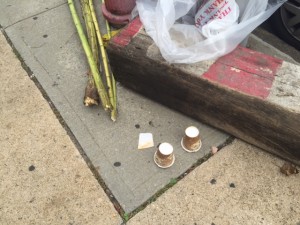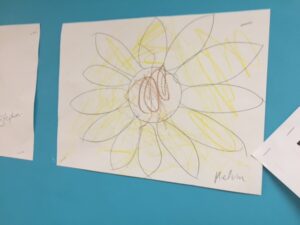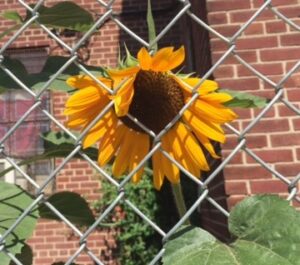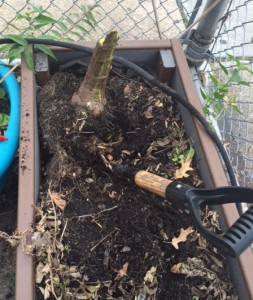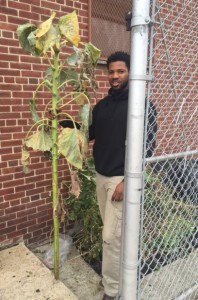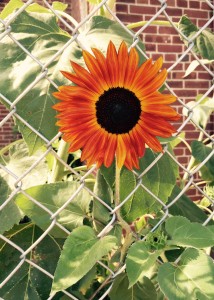
The Inclusions garden bounty of sunflowers was hard to miss this season. It included bright orange and yellow flowers deliberately planted by the pre-K students, as well as so called “volunteers”, which came from sunflowers from the previous year. The 2014 flowers dropped seeds into sidewalk crevices and those seeds grew into beanstalk-sized beauties in 2015.
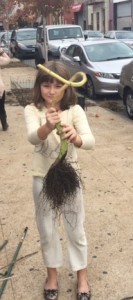
The sunflower root system is incredible: You can see here that the roots took over much of this bed and managed to break through the landscape fabric. Excavating these roots takes several people over an hour. At this weekend’s cleanup, we composted the stalks and leaves after the kids harvested sunflower seeds from inside the flower. We did not, however, compost the volunteer sunflowers. The roots of the volunteer plants dig deep into the soil under the sidewalk soil that, like most Brooklyn soil, is contaminated with toxins such as pesticides as well as lead and other heavy metals. In fact, sunflowers are known for their soil remediation powers!
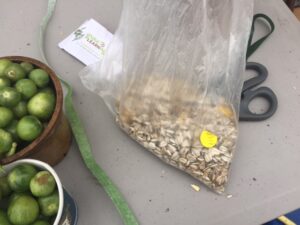 As this Farmer’s Almanac story explains, phytoremediation is a “process that employs various types of plants to remove, transfer, stabilize, and/or destroy contaminants in the our soil, water and air. Compared to other cleanup methods, such as soil excavation or pumping polluted groundwater, phytoremediation has become a clean, cost-effective and environmentally-friendly way to reclaim and reuse land that has been tainted by poisonous chemicals and heavy metals.”
As this Farmer’s Almanac story explains, phytoremediation is a “process that employs various types of plants to remove, transfer, stabilize, and/or destroy contaminants in the our soil, water and air. Compared to other cleanup methods, such as soil excavation or pumping polluted groundwater, phytoremediation has become a clean, cost-effective and environmentally-friendly way to reclaim and reuse land that has been tainted by poisonous chemicals and heavy metals.”
Read more about how sunflowers are used in the pre-K curriculum here. Related: Final 2015 Harvest
